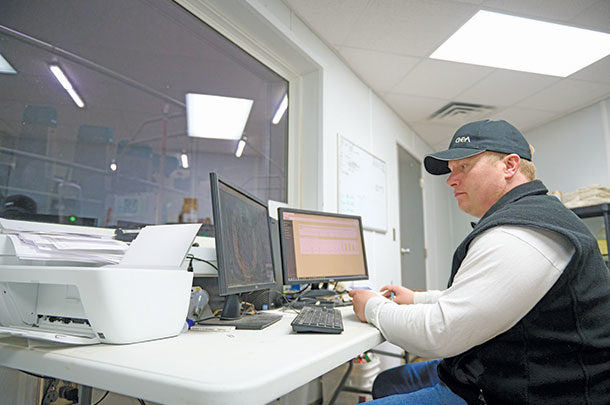Managing milk quality with robots is a lot like taking care of your vehicle. If your check engine light comes on and you ignore it, the problem won’t fix itself, and it may become a bigger issue over time.
A well-maintained, clean vehicle can go a long way in achieving peak performance.
Maximizing milk quality in robotic milking follows suit. Here are a few ways to ensure you stay in front of milk quality with robotic milking:
Use the right data
Being proactive and in tune with your data is imperative. Robot performance and cow data will give you the insights you need to quickly diagnose and resolve milk quality issues.
Trust your robotic milking system and the data it gives you. Unlike hands-on, conventional milking, you won’t witness all problems. Consolidate data into a handful of reports you can quickly review each morning and set up system alerts for changes in key areas. Be careful not to put yourself into alarm overload – if you receive too many alarms, you’re more apt to ignore them.
Here are the top reports we recommend reviewing daily:
Cow data reports
- Cows with poor udder health
- Cows declining in milk
- Incomplete cows
- Manual cows (robotic rotary only)
These reports will help you quickly identify which cows need extra attention. Pair this data with your milk co-op quality reports to review milk quality trends.
Machine function reports:
- Weekly 10-day review
- Weekly attachment info
- Weekly milk color sensor
- Incomplete stalls
- Stall attach rate
With this data, you can determine if the machine is functioning properly or if issues arise that can impact milk quality. For example, you can review the last few system washes, water temperature and chemical use to get a quick glimpse if the system washed properly. Your dealer service technician or manufacturer support team can log in remotely and assist when necessary.
Solve problems quickly
The faster you can identify a problem, the more quickly you’ll be able to resolve it and improve milk quality. Time spent reviewing daily reports will help you investigate areas needing attention.
For example, you have a bad count on Monday in your cow data reports, and Thursday you get confirmation from your milk plant data. Stop right away and go back to figure out what happened on Monday to cause it. Was it a cooling issue? Did you skip a wash? Within seconds, you can identify the issue and take corrective action to ensure it doesn’t happen again.
Early diagnosis is key. If something has been a problem for a while, it’s probably going to take a while to fix. Say you weren’t monitoring your somatic cell count (SCC) closely and it hits 300,000 cells per milliliter. Likely, it’s been slowly climbing, and you’ve finally hit your pinnacle to realize it’s a problem.
Surround yourself with people you trust. Consider quarterly meetings with key players – milking equipment dealer, robot manufacturer, veterinarian and nutritionist – to review your data and milk quality goals. Together, you can develop an action plan for improvement.
Manage for clean cows
Keeping milk quality counts low begins with the first drop of milk the machine harvests. The dirtier a cow is entering the robot, the more difficult it is for the robot to remove debris and kill bacteria during the teat prep process. When cleaner cows enter the robot, less bacteria challenge the full milking system, leading to better-quality milk.
Consider these robotic milking best practices to keep cows clean:
- Keep udder hair short: Short udder hair helps keep manure and bedding from sticking to the cow and out of the robot. It allows the camera to label teats faster, leading to quicker attachment times and a calmer cow. Maintain short udder hair by singeing or clipping.
- Trim tails: Tail trimming increases cow cleanliness by preventing manure buildup and reduces manure brought into the robot. If a cow’s tail is well above her udder floor, you can remove all switch hair. If her tail is within a few inches of her udder floor, leave a small switch to prevent the camera from mistaking her tail for a teat.
- Maintain clean stalls: Clean stalls when most cows are up to minimize disruption. Use an appropriate amount of bedding and groom stalls for even bedding distribution.
- Limit overcrowding: Reduce alley layer cows and give beds a chance to dry out and be available for the next animal. Limiting overcrowding ensures cows stay cleaner and that they have a comfortable, clean place to rest.
Keeping up with these practices routinely helps ensure cows remain clean, fewer bacteria enter the system and milk quality remains high.
Work with your milking equipment dealer to manage your robot and cow performance data. They can help you solve problems quickly and achieve your milk quality goals.






